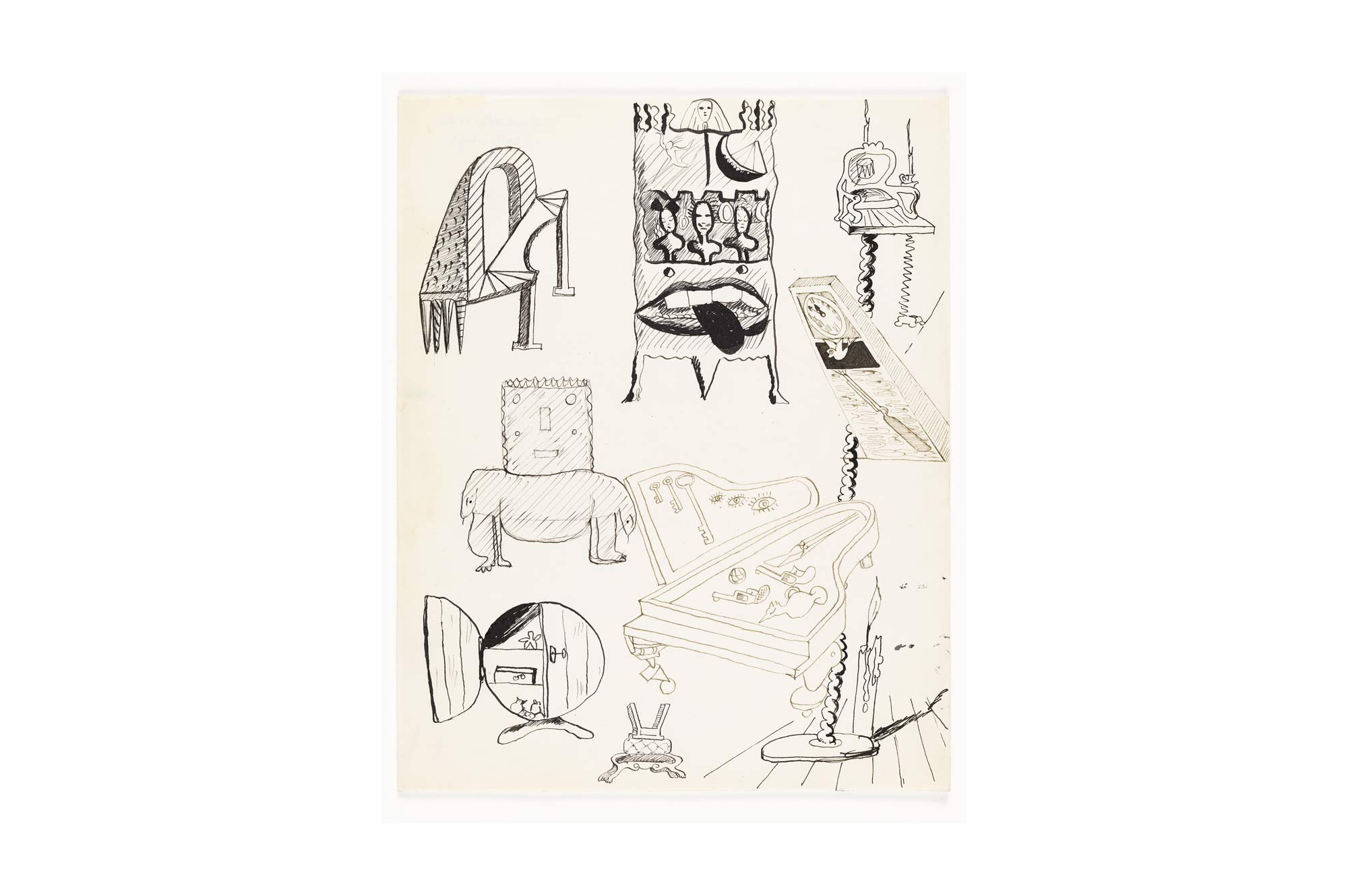André Breton (1896–1966, FR) was a poet, essayist, critic, founder and principal theorist of the Surrealist movement. He studied medicine and psychiatry, displaying a special interest in mental illness. During World War I he worked in neurological wards in Nantes. This experience prompted him to undertake an intense study of Freud, thus he developed an interest in art brut and art involving the subconscious and irrational. Breton pioneered automatic writing and drawing. He was also a collector of art and ethnographic material. A committed Marxist, he joined the French Communist Party in 1927. He left the party in 1935, but remained devoted to Marxist philosophy. Resident in Paris until 1941, Breton fled to America joining a number of other expatriate Surrealist artists in New York. After the war, in 1946, he returned to Paris, where he continued his left-wing political activism and promotion of Surrealism.
Surrealist collective drawings
After May 1940, Marseille was home to refugees coming from across Europe to escape to the Americas. Many artists, musicians, writers and thinkers found refuge at Villa Air-Bel, run by the US-American journalist Varian Fry with the support of the Emergency Rescue Committee (today called The International Rescue Committee). There, they would bide their time until they were able to escape. Victor Serge even named the spacious residence ‘Château Espère-Visa’. At one point or another, the Villa’s guests included such notables as André Breton, Jacqueline Lamba, Oscar Dominguez, Victor Brauner, Jacques Hérold, Wifredo Lam, Max Ernst, André Masson and Marcel Duchamp. André Gomès was keeping their photographic diary. In its large library, the motley group would engage in playful collective activities: readings, games, riddles and anagrams of all kinds, but perhaps most notably ‘exquisite corpses’, which Breton defined as ‘a folded paper game that consists of having several people compose a sentence or a drawing, without any of them being able to take into account previous collaboration or collaborations.’ In the classic example that gave the game its name, the first sentence read ‘the exquisite corpse-drink-wine-new’. Though it started with text, the game soon encompassed drawings, collages and photographic fragments.









 Victor BRAUNER, André BRETON, Oscar DOMINGUEZ-(Oscar-DOMINGUEZ-PALAZON,-dit), Wifredo LAM, Anonyme-(sans-précision), Jacques HÉROLD-(Herold-BLUMER,-dit),-Jacqueline LAMBA,Dessin Collectif, 1940-1941, CollectionMusée Cantini
Victor BRAUNER, André BRETON, Oscar DOMINGUEZ-(Oscar-DOMINGUEZ-PALAZON,-dit), Wifredo LAM, Anonyme-(sans-précision), Jacques HÉROLD-(Herold-BLUMER,-dit),-Jacqueline LAMBA,Dessin Collectif, 1940-1941, CollectionMusée Cantini